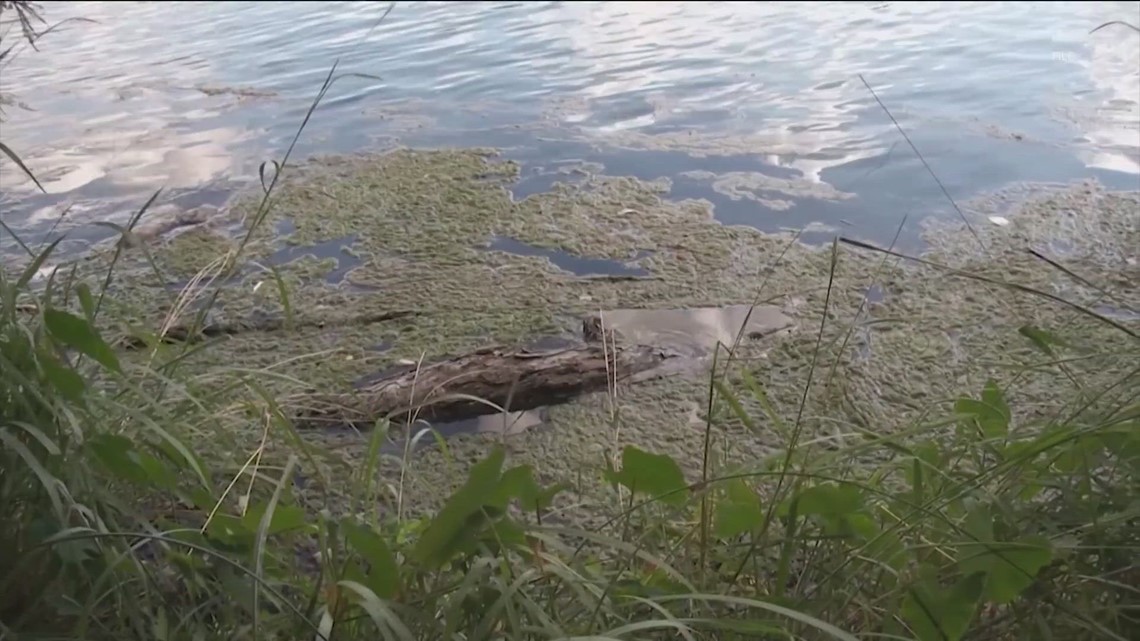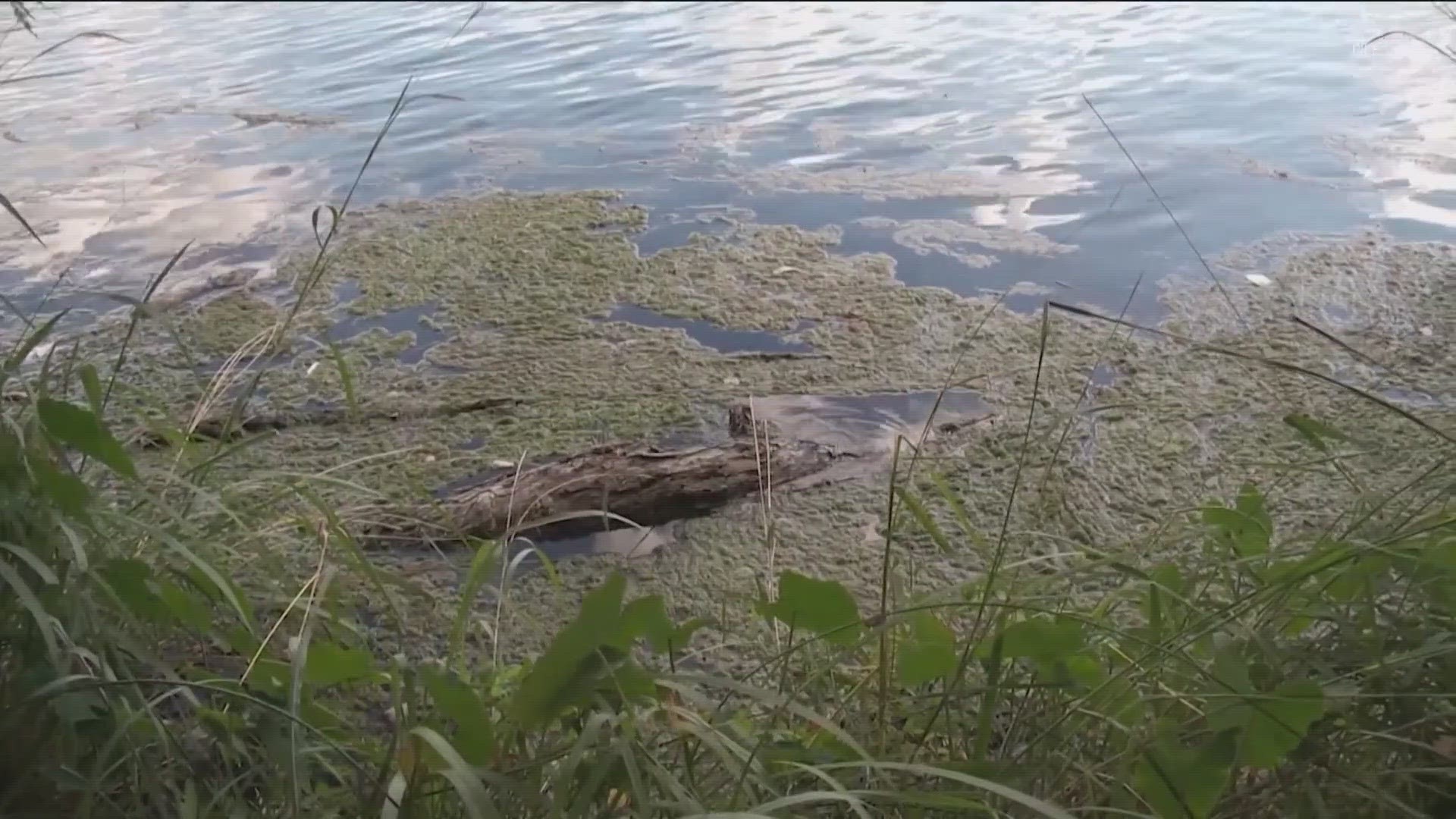AUSTIN, Texas — Austin waterways have seen their fair share of algae blooms and toxins come about over the years.
One international report from BlueGreen Water Technologies now says Lady Bird Lake had one of the worst blooms of 2023.
So, what does this really mean for the environment and community?
For Lady Bird Lake, it's common to see hundreds if not thousands of blooms on the water during warmer months. But there's also something sitting at the surface floating across our waters.
"The algae will look like a green, almost like a neon green type color. It can be as thick as a mat," said Jan Spin, the President of Americas for Bluegreen Water Technologies.
Spin is with Bluegreen Water Technologies, an organization focused on water treatments and preservation. He says it is common to see this algae in the summer months, but times and weather patterns are changing.
"The season is getting longer and longer and we're now seeing that algae blooms will remain resilient through the winter months," said Spin.
In a new list, the company said the algae bloom in 2023 ranks eighth as one of the worst internationally.
"We have a team of scientists around the globe who are working on this and the specifics that go into it. It's kind of an extensive database," said Spin.
A spokesperson for Austin's Watershed Protection Department provided the following statement:
"It is not clear to us what metrics or data were used in creating this list. Unlike many places, Austin has not had to close our lakes to recreation due to harmful algae, and we're not aware of any illnesses associated with harmful algae on our lakes this year."
"The harmful algae bloom is toxic, is both airborne and in the water body. It can affect our organs. It can affect our nerve systems. But for smaller animals such as dogs, little cats, concentrations of it can be lethal," said Spin.


Pets have reportedly died as a result of some of the algae here in Austin, a big reason Spin says change needs to happen now.
"The City of Austin has been expanding our monitoring of the lakes, springs, and creeks; partnering with other agencies to share data and knowledge," a spokesperson with the Watershed Department said.
"The City of Austin takes the algae fairly, we believe, very seriously, because they've been monitoring it, working at it now for the last several years," said Spin.
Both agree that keeping toxins out of waterways is top of mind.
Below is the full statement, attributed to the Austin Watershed Protection Department:
It is not clear to us what metrics or data were used in creating this list. Unlike many places, Austin has not had to close our lakes to recreation due to harmful algae, and we’re not aware of any illnesses associated with harmful algae on our lakes this year. It is true that mats of harmful algae have been present in the Austin area since at least 2019, with initial testing done on Lady Bird Lake.
It is difficult to compare Austin’s experience with other places since the type of algal growth form is different. In Austin, the algae mats begin on the bottom of the lake and float to the top, making their distribution very patchy. In other places, algae tends to take the form of individual cells spread throughout the water body, called a planktonic bloom. A planktonic bloom poses a greater risk to people and pets.
Not much is known about the mats of harmful algae that we’ve been experiencing. The City of Austin has been expanding our monitoring of the lakes, springs, and creeks; partnering with other agencies to share data and knowledge; and conducting studies to learn more about the extent of the algae and the conditions where it is likely to thrive and pose the most risk.

